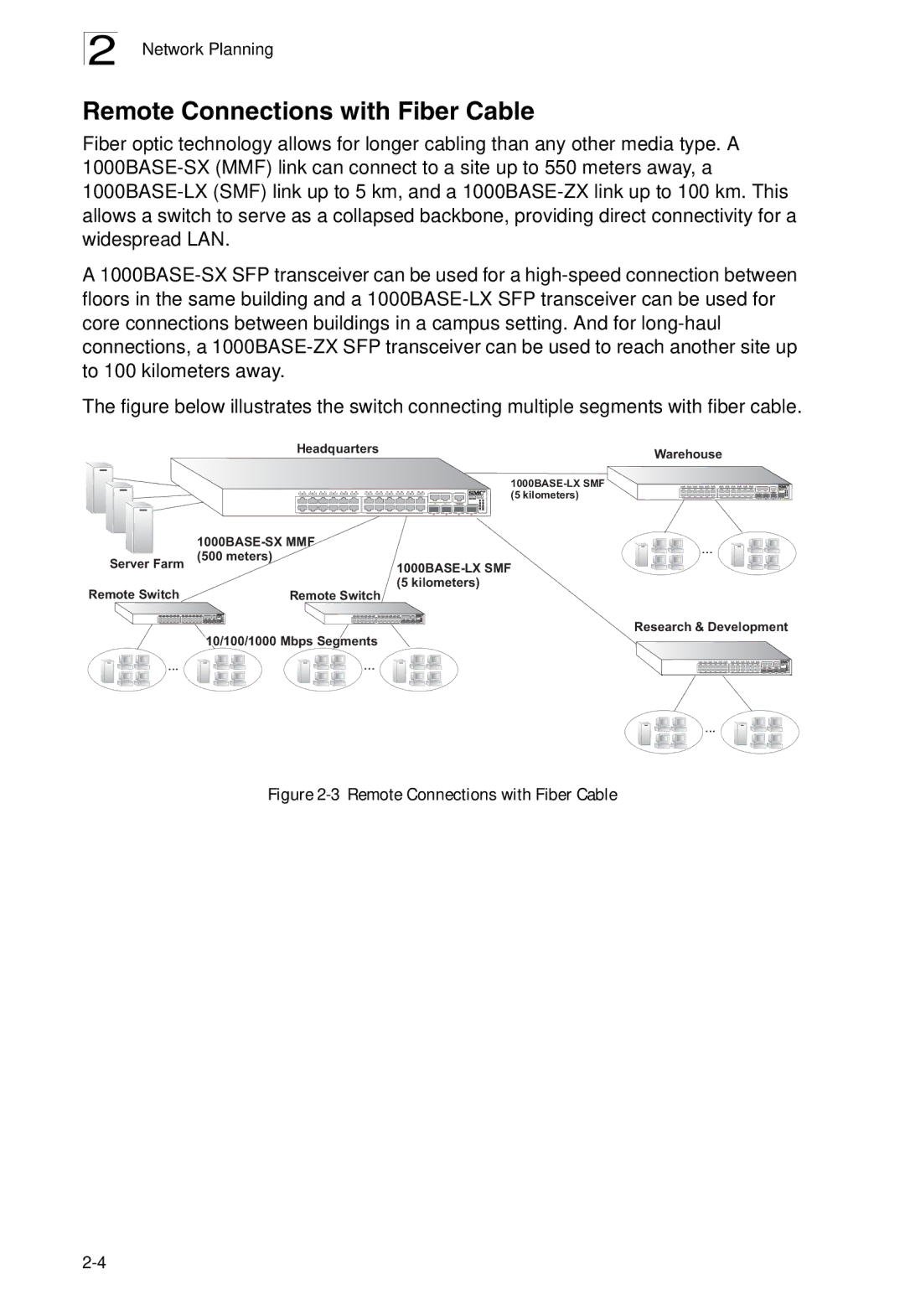SMC8126L2 specifications
The SMC8126L2 is a robust Layer 2 managed switch developed by SMC Networks, designed to meet the demands of modern networking environments. This switch is part of the SMC's lineup of network solutions, emphasizing reliability, efficiency, and advanced functionalities suitable for both small and medium-sized enterprises.One of the standout features of the SMC8126L2 is its support for 26 ports, which allow multiple devices to connect seamlessly. This includes 24 Fast Ethernet ports (10/100 Mbps) and 2 gigabit uplink ports. This configuration enables flexible network designs and enhances the bandwidth availability for devices that require faster data transmission.
The SMC8126L2 is equipped with various Layer 2 switching capabilities, including port-based Virtual LAN (VLAN) support, allowing businesses to segment their networks for better security and performance. This capability ensures that sensitive data remains isolated and reduces broadcast traffic across the entire network. The switch also supports 802.1Q tagging for VLAN configuration, facilitating the management of multiple VLANs simultaneously.
Quality of Service (QoS) is another significant aspect of the SMC8126L2. It employs intelligent traffic management features, prioritizing critical applications such as VoIP and video conferencing. This ensures that time-sensitive data packets are transmitted efficiently, minimizing latency and improving overall user experience. The switch supports multiple QoS mechanisms, such as 802.1p priority tagging and port-based scheduling, thus accommodating varied networking needs.
Security features are paramount in the SMC8126L2, with network access control through Port Security and MAC address filtering. This prevents unauthorized access and enhances the security posture of the network. Additionally, the switch supports IGMP Snooping, which conserves bandwidth by ensuring that multicast traffic is only sent to ports that require it.
Another remarkable aspect of the SMC8126L2 is its management capabilities. The switch can be managed through various methods, including web-based interfaces, command-line interfaces (CLI), and SNMP (Simple Network Management Protocol). This flexibility allows network administrators to monitor performance, configure settings, and troubleshoot issues effectively.
In summary, the SMC8126L2 brings a suite of advanced features and technologies that cater to the evolving requirements of networking. With its extensive port options, VLAN support, QoS capabilities, robust security measures, and versatile management interfaces, the SMC8126L2 stands out as a reliable choice for organizations looking to enhance their networking infrastructure. Its performance and reliability make it well-suited for addressing the challenges of modern network environments while ensuring efficient data flow and security.

